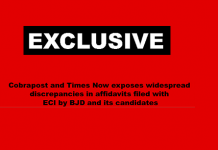During the weekend, a senior minister confessed to a group of journalists that the government had no assessment of the impact demonetisation has had in rural and semi-urban areas, and whether new currency notes have reached these areas.
Neither the PM nor senior ministers have contested claims by a Pune-based outfit, ArthaKranti, that they were behind the idea. The outfit had given BJP leaders a presentation before the 2014 Lok Sabha elections. Its leading light Anil Bokil has also claimed to have met the PM in July for a meeting that lasted nearly 90 minutes.
The jury is still out on how much planning went into it. The PM said 10 months of preparation went behind the decision, but no official has so far elaborated on the planning before the move.
Bureaucrats, who were in the know, were working to a quick deadline, it is learnt. In the process, several minute details were glossed over.
Then there are tales about how some bureaucrats had raised concerns about the multiple cascading effects of the move. “But the support from most other senior bureaucrats, as well as among the ministers, drowned these voices,” a source said.
However, finance ministry bureaucrats maintained that much planning, and even consultations, were carried out. But they admitted that the number of “money mules” or “surrogates” was not accounted for. Another gap in planning was that nobody thought acceptance of new Rs 2,000 notes would be a problem.
When the plan was being deliberated upon, all stakeholders involved were in agreement that a higher denomination note was needed, another source said. “The RBI is known to have proposed Rs 2,000, Rs 5,000 or Rs 10,000 denominated notes. There is now an acknowledgement that a decision was reached without considering how the new notes would be accepted by people.”


























